Through previous blog entries, we navigated our way towards the interesting possibility of 12.Ng4

Line 12.Ng4
In this blog entry we look at 12.Ng4 in more detail. We start by putting the f6-knight on the spot that was most annoying to White in the Conquest-Royal game: 12…Ne4

Line 12…Ne4
As Black, this feels very risky when you spot 13.dxc5

Line 13.dxc5
The line of the bishop on b2 is opened up towards the black king and the knight on g4 is poised to jump to f6 or h6. Black has to defend accurately because one misstep and he loses. For example 13…Nxc5 loses to 14.Nf6+ gxf6 15.Bxf6

Line 15.Bxf6
The threats of Qg4+ and Bxh7+ are too much for Black to handle (sensibly).
Black’s best is 13…Bxc5 when unfortunately my while-walking-to-the-cinema idea of 14.b4 Bd6 15.Bxe4 dxe4 16.Nf6+ gxf6 17.Bxf6

Line 17.Bxf6 – what Matthew thinks about while walking to the cinema!
unfortunately doesn’t make it (I fear as much). Black is a little constricted but White doesn’t have enough power to create any more threats. After 17…Qc7 18.Qh5 Rfd8

Line: 18…Rfd8
Black threatens …Ng6 (or …Nd5) allowing …Bf8 to cover any threats on the dark squares. My biggest hope rested on 19.Qh6 Nf5 20.Qg5+ Kf8 21,g4

Line: 21.g4
but the engines confidently refute it with 21…h6 22.Qh5 Nxe3 23.Qxh6+ Ke8

Line: 23…Ke8
Just in case you were wondering, that’s why Black played the rook to d8, not to e8! White’s position is wrecked and he is a bit short of attacking pieces to cause any more damage. However, it’s not trivial to calculate during a game, so I would imagine most Black players trying to avoid this without preparation. The engines’ best line after 13…Bxc5 was another line that might come as a surprise to an unsuspecting human opponent:
14.b4 Bd6 15. Nxe4 dxe4 16.Bxe4 Bxe4 17.Qd4

Line: 17.Qd4
Forking the bishop on e4 and the pawn on g7 threatening mate! Black needs some engine ingenuity to maintain the balance:
17…e5
Stopping the mate on g7
18.fxe5
18.Qe4 f5! is a shame! However 18.fxe5 attacks 2 pieces!
18…Bxb4 19.Qxe4 Bc3

Line: 19…Bc3
An important point: if Black didn’t exchange off the bishop then White has many attacking ideas with e6 opening the line of the bishop on b2.
19…Bc5 20.e6 f5 21.Qe5 wins on the spot for example!
20.Rad1 Qc7 21.Bxc3 Qxc3 22.Rd7

Line: 22.Rd7
And now 22…Qc6 is Stockfish’s clever route to equality (23.Qxc6 Nxc6). However, I wouldn’t be 100% sure about being equal with Black after a move like 23.Qd4 (even if the engine evaluation is equal).
So this line sort of holds together for Black, but I think it would be a very tough ask for any human player to get this right unprepared. How about the other natural move 12…Nxg4?
As you would expect, this one is quite a bit calmer: 13.Qxg4

Line: 13.Qxg4
As we discussed in the last blog post, the nice thing is that Black’s knight doesn’t get to f5 now as 13…Nf5 (which might be considered as a pawn sacrifice to get White’s light-squared bishop as compensation) loses to 14.dxc5 (opening the line of the bishop against g7) 14…Bxc5 15.Bxf5 destroying the knight’s defence of g7 and threatening mate.
Black therefore has to settle for something less active. The engines are fairly happy with both 13…Ng6 (blocking the mate threat from a more passive square, but with the option to return to f5 later) and 13…f5 (more or less blocking the kingside for now but permanently removing the f5-square from the knight and weakening the e5-square) However, after (for example) 13…Ng6 14.Qh5
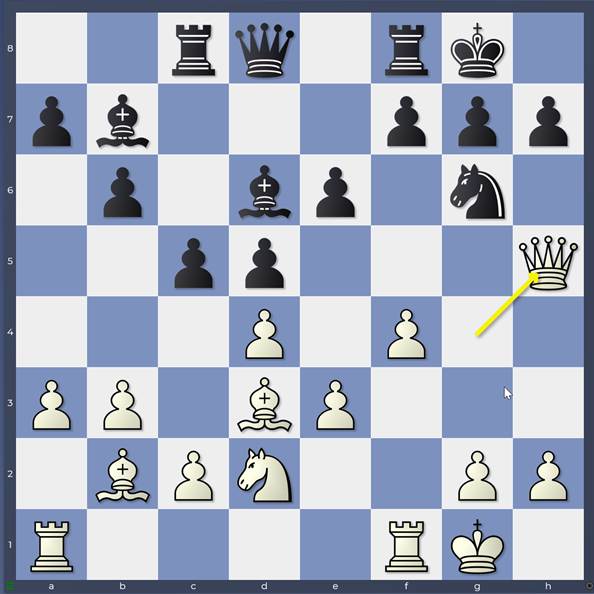
Line: 14.Qh5
It’s just a normal, complicated game where Black has to watch out a little for Nf3-g5 as well as Rf3-h3.
We can also look at the engines’ main move 12…Nd7

Line: 12…Nd7
In general, even though the engines even likes Black a tiny bit more (!) I like any lines where one of my pieces (like the knight on g4) is hanging around the kingside while a black piece moves away!
Two lines quite appealed to me:
13.dxc5

Line: 13.dxc5
Opening the long diagonal always feels good with the knight on g4! The engine isn’t worried but any human would be!
13…bxc5 14.Nf3

Line: 14.Ng5
bringing the knight in preparation for a jump into g5. Stockfish went for something just as aggressive, but presumably more engine-proof 😉
13.Qe1

Line: 13.Qe1
Let’s show you the fun main line!
13…f6 14.Qg3 cxd4 15.Qh3 f5 16.Nf3

Line: 16.Nf3
Teeing up! Ng5 is the threat!
16…h6 17.Nxh6+ gxh6 18.Nxd4 Rf6

Line: 18…Rf6
Draw agreed in one of my first engine games! But I wasn’t letting them get away with that!
19.Rf3 Qf8 20.Rg3+
The thematic major piece lift via the f3 square.
20…Kh7 21.Nf3

Line: 20.Nf3
Pointing the knight to g5 and opening the line of the bishop along the a1-h8 diagonal.
21…d4

Line: 21…d4
22.Ng5+
22.Bxd4 Bxf3! 23.Bxf6 Qxf6 hitting the rook on a1 is the tactical point.
22…Kh8 23.Bxd4 e5

Line: 23…e5
Another benefit of 21…d4: by drawing the bishop to d4, the block …e5 comes with tempo.
24.Bb2
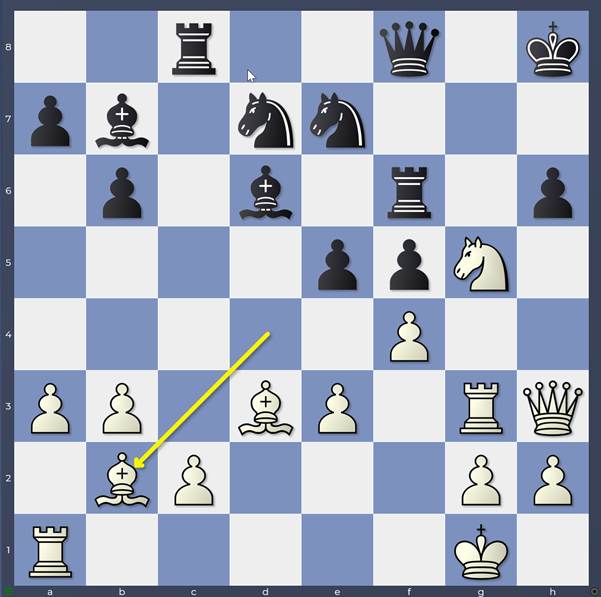
Line: 24.Bb2
White maintains the pressure as Black seems more or less paralysed. I’m not sure the engines’ defensive manoeuvre would occur to me very often under any circumstance!
24…Bd5 25.c4 Bg8

Line: 25…Bg8
Covering the e6,f7 and h7 squares! Essentially neutralising the biggest impact of the knight on g5!
White screws up the pressure and Black decides it’s time to break the shackles!
26.Rd1 exf4 27.exf4 Bxf4 28.Bxf5
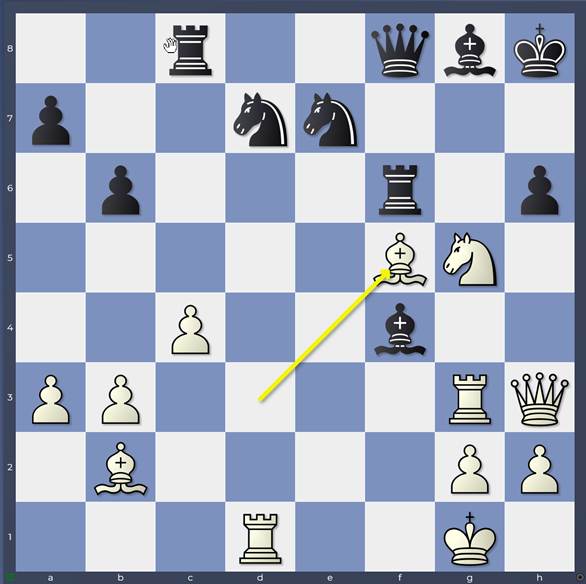
Line: 28.Bxf5
I’d give Black as lost many times over, but the engines are still yawning!
28…Nxf5 29.Qxf5 Be5
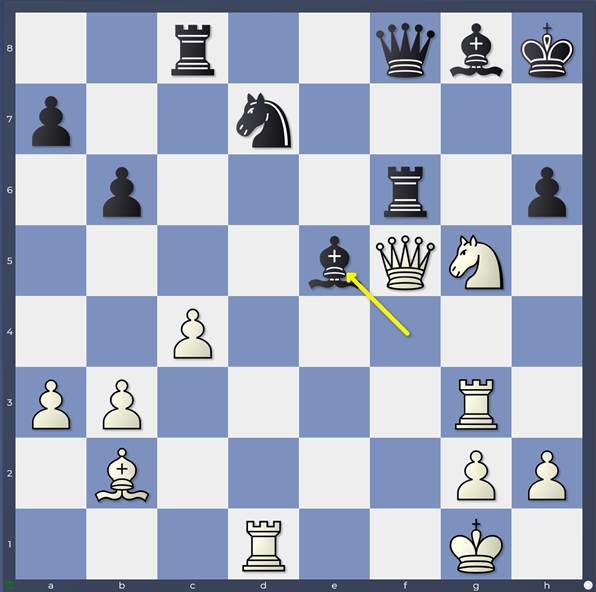
Line: 29…Be5
I confess it took me a little while before I understood the point of this “blunder”
30.Bxe5 Nxe5 31.Qxe5 Rc5
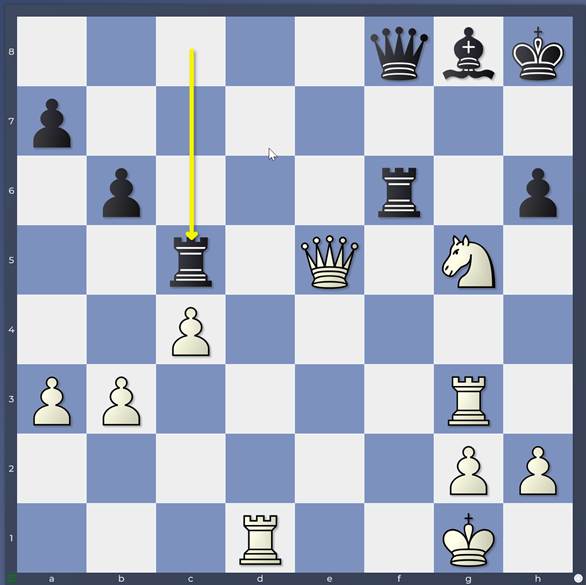
Line: 31…Rc6
Yep! You catch White just as he thinks he’s leaving through the front door!
32.Qe3 Rxg5 33.Rxg5 hxg5 34.Qxg5

Line: 34.Qxg5
is given as equal (yawn!) by the engines.
This is of course hardly an exhaustive analysis, but it’s an interesting example of a type of possibility that engines are strong at spotting during opening analysis. These concrete ideas, seemingly a little illogical (why retreat your strong knight – your pride and joy – from the e5 outpost?) but tailored as a specific response to something unusual that just happened in the position (11…Ne7) can prove quite challenging for opponents to deal with.
As a final comment, I was looking through Pavlovic’s book on the “Modernized Colle-Zukertort Attack” and I noticed that he was promoting various other ideas around move 10 and 11. For example
10.Qe2 Rc8 11.Rad1
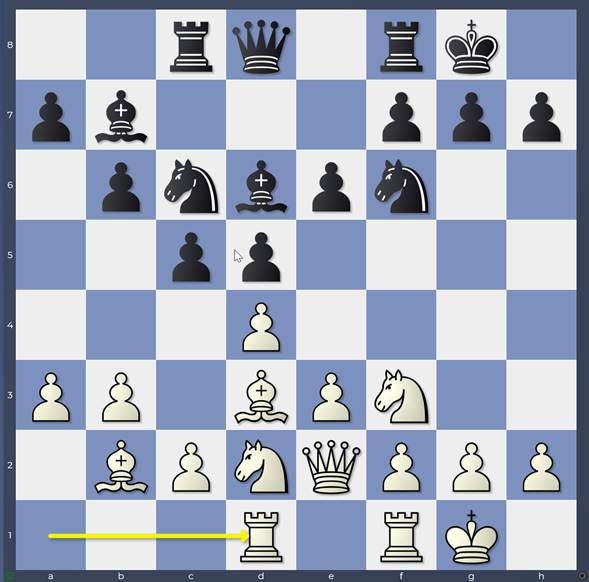
Line: 10.Qe2 Rc8 11.Rad1
or
10.Qe2 Rc8 11.Ne5

Line: 10.Qe2 Rc8 11.Ne5
In both cases, White prioritises flexibility, delaying f4 and keeping other plans in reserve until Black’s intentions are clear. For example, one of Pavlovic’s lines is 11…Qc7 12.f4 (now, only when forced) 12…Ne7
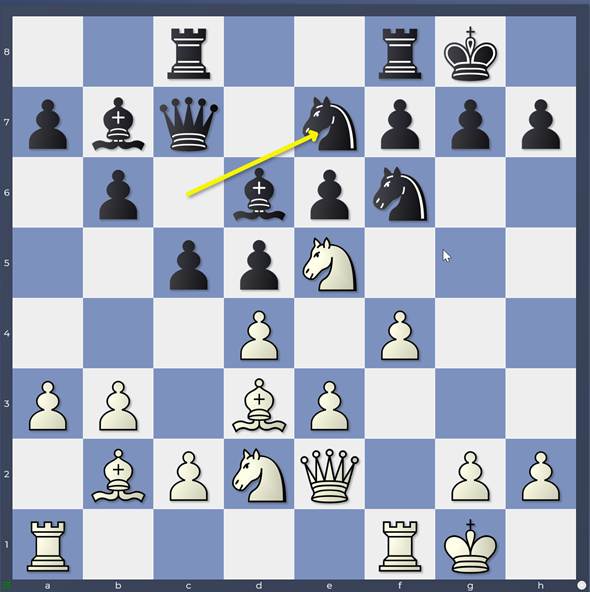
Line: 10.Qe2 Rc8 11.Ne5 Qc7 12.f4 Ne7
White’s flexibility meant that f4 only arrived after Black committed his queen to c7 which he obviously didn’t have to do in Conquest-Royal. Obviously, White’s queen is not covering e4 from on e2 (as it was from f3 in Conquest-Royal) which gives Black an idea of …Ne4 but Pavlovic suggests the interesting plan
13.dxc5 bxc5 14.c4
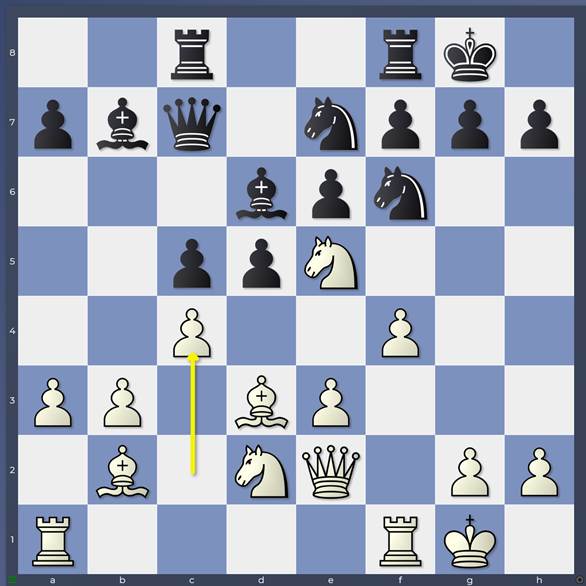
Line: 10.Qe2 Rc8 11.Ne5 Qc7 12.f4 Ne7 13.dxc5 bxc5 14.c4
Plenty of ideas we know (Ng4!) are in the mix but just in a slightly different setting.
Why do I mention all this? It just reminded me a little of my experiences playing the Stonewall Dutch as Black.
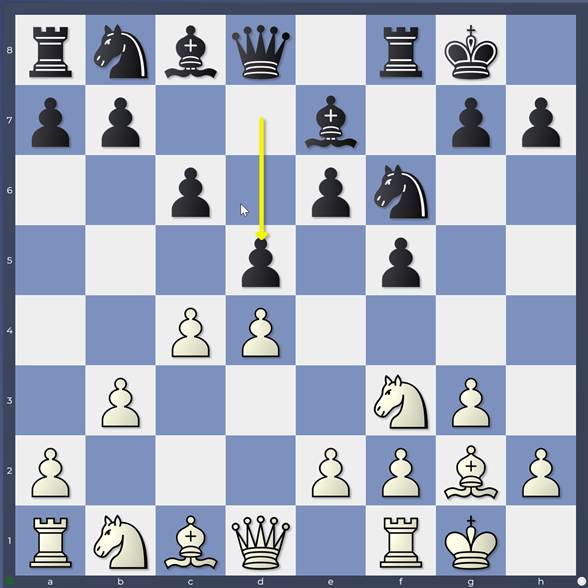
Line: 1. d4 e6 2. c4 f5 3. g3 Nf6 4. Bg2 Be7 5. Nf3 O-O 6. O-O c6 7. b3 d5
At the start, I went for this structure fairly directly with great enthusiasm, and excellent results. After a while, I started to discover things I liked less – for example, move orders that interfered with the setups that I wanted – and my Dutch Stonewalls underwent a mutation. I stopped playing it from move one, but I was often very happy to set up a Dutch Stonewall structure from other openings when the chance arose (for example the Catalan or the Queen’s Indian).
Here as well, we saw Stuart playing a very direct plan of Ne5,f4 and Qf3 without any hesitation. This directness gave Black enough warning to set up a good defensive structure (not easy, but it is possible). Realising this as White, to keep your opening fresh, you tweak things by holding back a bit (Qe2, Rad1), waiting for a more favourable moment to apply the structure and setup you are really looking for. I hope that makes sense!
In the next blog, I want to round off our look at this system by focusing on something that I find quite difficult to grasp: the thorny question of playing …cxd4 (or not!)


